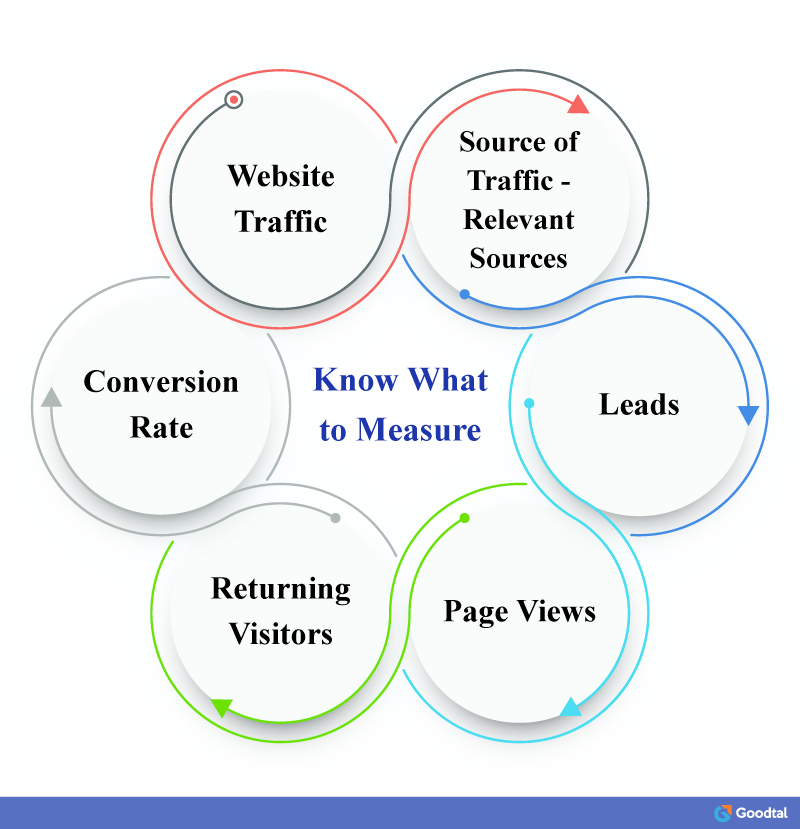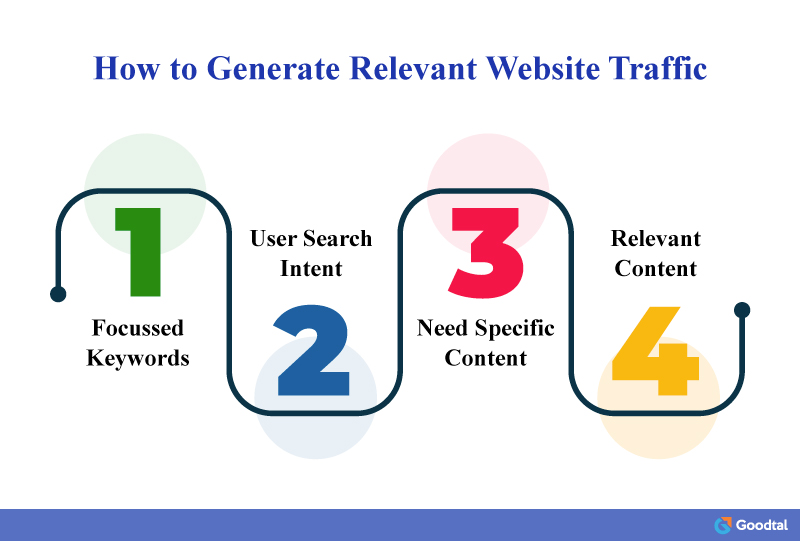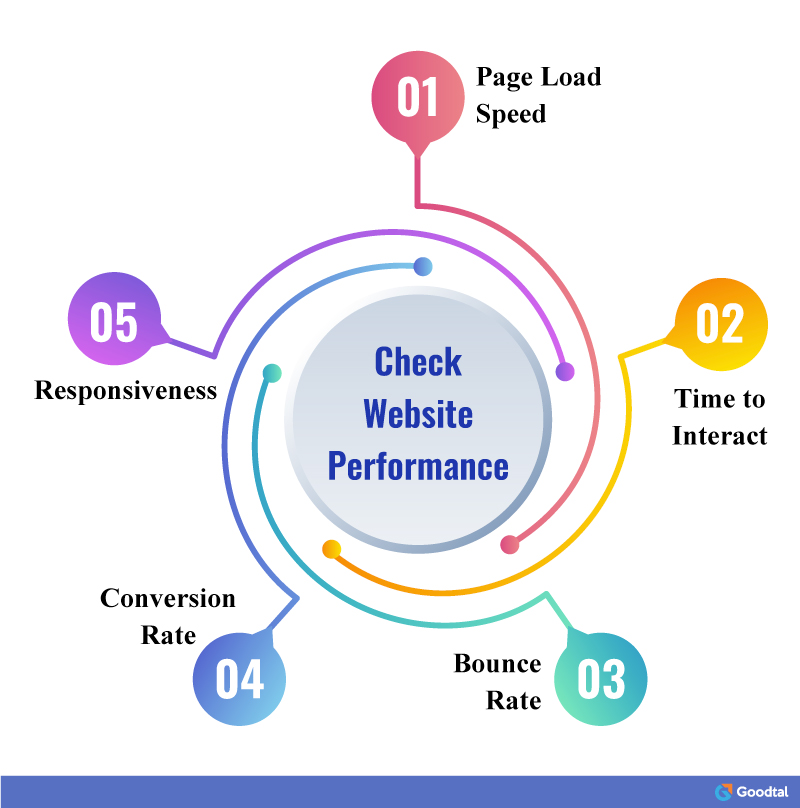
In these times of competition, businesses persistently face a threat to survival. Getting more customers and keeping them loyal to the business are the only ways for businesses to grow.
Digital Marketing offers various ways to reach your customers and convert them for business growth. And to compete, businesses have to spend considerable time and money to increase their customer base.
However, spending a hefty amount on digital marketing may not ensure success or RoI. So, businesses that value their time and money focus on the best practices in digital marketing.
Know What to Measure

Businesses first measure their online presence. This is majorly measured through the performance of their website. What more do businesses measure? Commonly, digital marketing metrics include parameters such as website traffic in numbers, website traffic sources, leads, Page Views, Cost per Lead, Returning Visitors, Conversion Rate, Goal Completion Rate, Click-Through Rate, etc.
When you search for digital marketing performance metrics, you will find these parameters, which you would have already included in your measurements. However, this is not all. But, just following the crowd and blindly focussing on these parameters can give you more stress than results.
There is no doubt that the parameters mentioned above are essential. However, there are micro aspects of these metrics that you must focus on. Reading further will convince you why!
Traffic - Only From Relevant Sources
Are you too stressed about your website traffic? Well, getting high website traffic is not all; you need traffic from target sources so that there are increased chances of conversions. If you are selling baby diapers, you don’t want people interested in reading about cutting-edge technologies flooding your site traffic, do you? So, what can you do to get relevant traffic? The answer is simple!
Develop content and SEO strategies focused on your target audience.
Let’s understand how to do this.

Select the Keywords
If you want to attract specific and relevant traffic, you must develop focused SEO plans. To begin with, don’t optimize for too many keywords; some of these may not be relevant to your business. For example, if you are into the business of selling Brownies. In this case, your keyword should be focused on selling Brownies. But, if you publish a blog on your website titled how to make delicious brownies, you cannot expect your site visitors to convert. They will visit your website, stay on the website to read your blog, follow your recipe and make Brownies. Your analytics will capture the visit, which indicates that the visitor stayed on your website for a good duration, but this visitor did not buy your product!
Measure how your website is performing on the focus keywords.
Don’t Ignore User Search Intent
No matter how fast the search engine algorithm updates, one parameter that will definitely work for SEO is the User Search Intent. So, focus on USI, and your keywords will not go wrong.
Content for Specific Needs
You must have heard so many cliched’ statements about website content, such as, “content is the king,” “Content should be long to engage the audience,” and much more. As such, there is no one-size-fits-all approach for compelling content. For some channels and some purposes, short-form content works equally well. The best example is Twitter. Despite focusing only on short-form content, we all know how this channel has engaged a very large number of users!
It largely depends on the type of information that your users are looking for about your business. You must develop and promote such content.
In summary, your website content should be specific to the needs of your target users. If they just need your contact number, you don’t need a complete blog post, and just a simple keyword such as “Contact Us,” followed by your number, email address, etc., is enough for them to reach you.
Content Relevance
In a nutshell, more than anything else, your content should be relevant to your business if you are not hosting a general blog but a business website aimed at converting visitors. For example, if you are a digital marketing company hosting a blog on your website, a blog with the title “DIY craft tips” hosted on your website can invite traffic and engage visitors interested in craft tips but not give you any relevant leads for your business.
You must evaluate whether you are just hosting a blog that you are earning from or running a business that sells products or services. Your content should be focused accordingly.
Site Performance for Search Engine and Users
Website performance is directly affected by page load speed and time-to-interact.

Page Load Speed
In simple terms, it indicates the time taken for the web page to show on the browser. If it takes longer, the user will skip the site. Businesses are working hard to optimize page load times for their websites and make the pages load quickly.
Time to Interact
Also, the website’s time to interact matters. If the user can see the page but scrolling or clicking takes a long time, the user will leave the site. Apart from the fast page load, we must not ignore the time to interact as a major component of site performance. If your site interaction is slow, the user quits, and all the efforts to bring leads and traffic to the site fail.
Bounce Rate
Also, to know whether those visiting your website are interested in your business, it is important to gauge the bounce rate.
Bounce rate refers to the percentage of visitors that leave your website (or “bounce” back to the search results or referring website) after viewing only one page on your site.
As the definition suggests, high bounce rates, generally greater than 50%, indicate your website's bad performance. Your business must change website content and make it more relevant to make visitors interested in your website.
Conversion Rate
Conversion rate is undoubtedly one of the most crucial factors to measure for your website. However, the conversion rate also depends on how successfully you bring relevant traffic to your website. After you have brought relevant traffic to your website, making the user stay and convert will depend on the quality of the User Experience that your website offers. So, hire the best user experience designers to ensure your website performs.
Responsiveness
Responsive websites are no more trends; these are accepted as norms now when most users connect with your business through other devices, including mobile phones. It is a well-known fact that responsive websites perform better, even in search engine rankings. So, businesses are aware of the importance of responsive websites. Yet, despite the intention, many businesses still fail to make their websites responsive. They keep doing trial-and-error and end up affecting the website performance on one of the many devices.
Is making your website responsive difficult? No, a website designed and developed keeping in mind all the technicality of responsiveness can perform on different devices. Apart from that, the different types of content you use on your website, i.e., audio, video, infographics, etc., should also be optimized for responsiveness. You just need the right mix of the best website designers and website developers to get a successful, responsive website.
Where to Measure
So far, we have been talking about a business website. But, can the on-page optimization factors such as content and keywords on the website alone get relevant traffic and conversions if we have not used the right sources for getting traffic and leads? So, we must do our best to get users to the website, even before the website can take care of the traffic and perform for our business. Now that you know what to measure, we can move to the next aspect of digital marketing - where to measure!
Social Media
The easiest way to reach a vast majority of users and invite them to your website is through social media channels. Many such channels include LinkedIn, Facebook, Twitter, Pinterest, Instagram, etc. You need not use up all for engaging with prospective customers. The best big data company can help you identify the social media channels that your target audience uses the most. Once the channels are identified, focus on leveraging these. However, don’t forget to measure the performance of your campaign on these channels periodically. In our case, our goal is to get the maximum possible relevant traffic to our website that can increase the chance of conversions.
PPC
If you have tried your best to bring traffic to your website, but despite hosting a good website, and social media efforts, you are not getting enough leads, you will have to explore Paid-per-click. Businesses should plan a budget and invest in PPC channels such as Google Ads. However, PPC can be costly, so it is essential to budget, plan and develop effective campaigns, measure campaigns every quarter, and change the strategy after measurement.
Wrapping Up!
Not every business needs an app, so websites invariably remain an essential part of business initiatives for an online presence. Most local businesses or service providers not selling anything online don’t need an app; they just need a website to attract prospective customers. So, this blog gives you actionable insights on how to make your business website successful. It discusses the digital marketing elements you must include in your campaign and the parameters you should periodically measure.
If your core competency is not in the development or design of the website, and nor can you divert your efforts to digital marketing, let the professionals take care of these for your business. Goodtal lists the best service providers in website development, website design, and digital marketing for you to explore!
